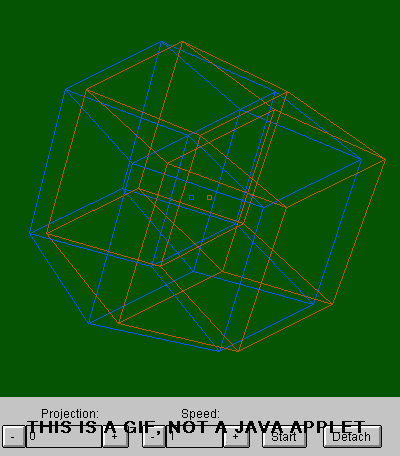Credit & Copyright: Mark Newbold
Explanation:
Does our universe have
higher but unusual
spatial dimensions?
This idea has been gaining popularity to help explain why vastly separated parts of our universe appear so similar,
and why the geometry of our universe does not seem to result naturally from the
amounts of matter it seems to contain.
The idea is also prevalent in modern attempts to combine
gravity and
quantum mechanics
that include
M-theory (formally
string theory) and
Randall-Sundrum theory.
Such models involve
branes and bulks
and frequently attempt to explain, among other things, why some
quantum energies
and the measured
cosmological constant
are so small.
Above, a dynamic three-dimensional drawing (two spatial plus one time) of a
four-dimensional depiction of a five-dimensional cube (a hypercube with four spatial
dimensions is also known as a
tesseract) is shown.
Donning red-blue glasses will give the best
multi-dimensional perspective.
News:
A partial solar
eclipse will occur tomorrow.
1999 2000 2001 2002 2003 2004 2005 2006 2007 2008 2009 2010 2011 2012 2013 2014 2015 2016 2017 2018 2019 2020 2021 2022 2023 2024 2025 |
Yanvar' Fevral' Mart Aprel' Mai Iyun' Iyul' Avgust Sentyabr' Oktyabr' Noyabr' Dekabr' |
NASA Web Site Statements, Warnings, and Disclaimers
NASA Official: Jay Norris. Specific rights apply.
A service of: LHEA at NASA / GSFC
& Michigan Tech. U.
|
Publikacii s klyuchevymi slovami:
space - cosmology - dimensions - Kosmologiya - kosmologicheskaya postoyannaya
Publikacii so slovami: space - cosmology - dimensions - Kosmologiya - kosmologicheskaya postoyannaya | |
Sm. takzhe:
Vse publikacii na tu zhe temu >> | |
